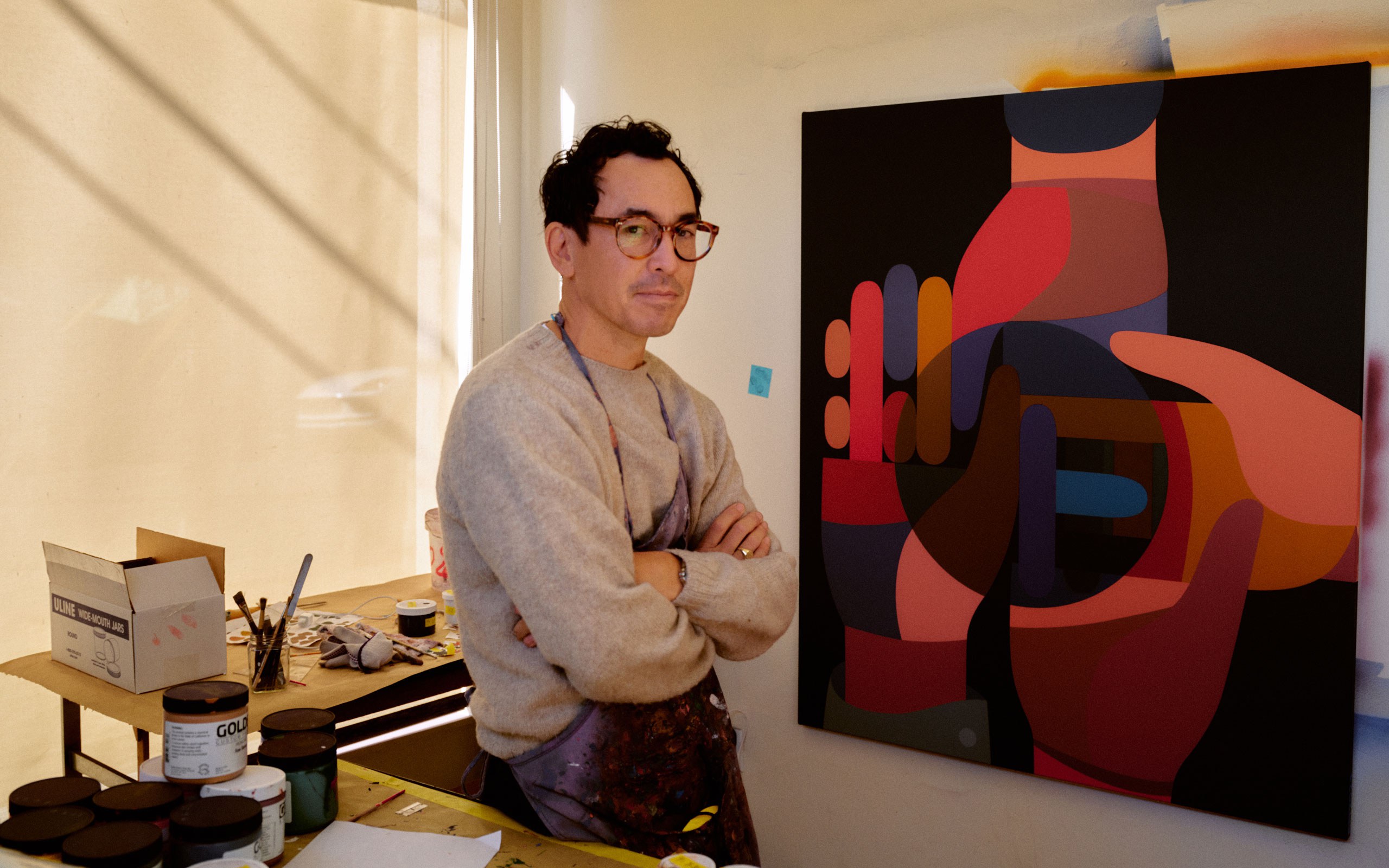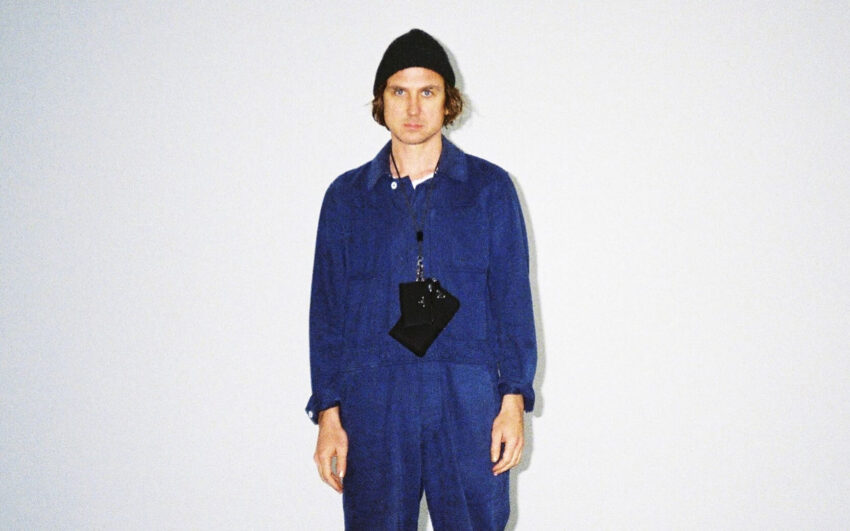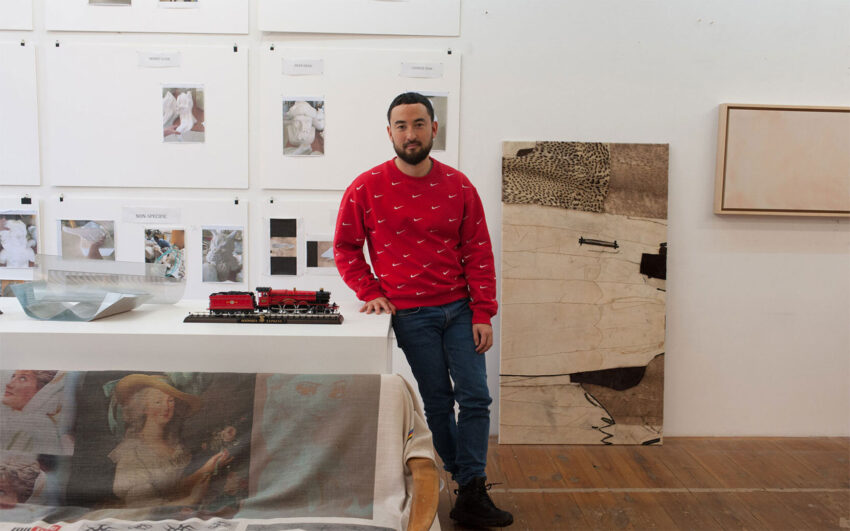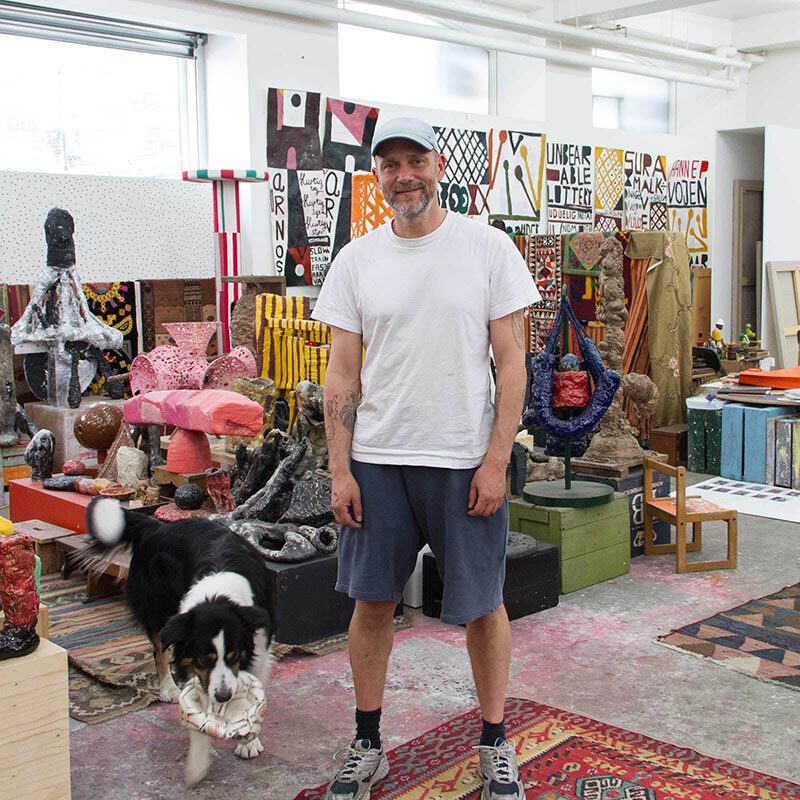The Canadian Geoff McFetridge attended the Alberta College of Art and received an MFA from the California Institute of the Arts. Early on, he worked for commercial clients, following his interest in subculture and especially skate culture. His stylized designs became quickly recognizable and led to collaborations with Nike, Pepsi or Apple. At the same time, he is a working painter who shows internationally, not caring to be reduced to a commercial or fine art label. The simplicity and straight-forwardness he uses in his pictures transcends both his lines of work; his paintings add hidden context.
Geoff, as a child, you always liked to draw. Was that a way to escape your suburban environment in Alberta, Canada – and the first step towards becoming an artist?
Drawing is the easiest thing to access. Maybe it’s even the opposite of becoming an artist. Anyone can do it, it doesn’t take much material! As my mum was a teacher and my dad a lawyer, there were always office supplies around at home. So I would just draw on the backs of scrap paper. And when you discover something very young that you enjoy, it never leaves you. Later, you think: what am I going to do with this thing that I love? So going to Art School was the obvious choice for me. And luckily, I discovered commercial art when I felt I needed a job.
What was Art School in Canada like?
The foundation year is about art history, then it was on to design and commercial art, and printing. I learned so much from doing commercial art, from understanding how things are being made for production. Today, I am basically a one-person production company. All those mechanical processes on how to turn a drawing into a thing – for my sculptures for example – I learned them through commercial art.
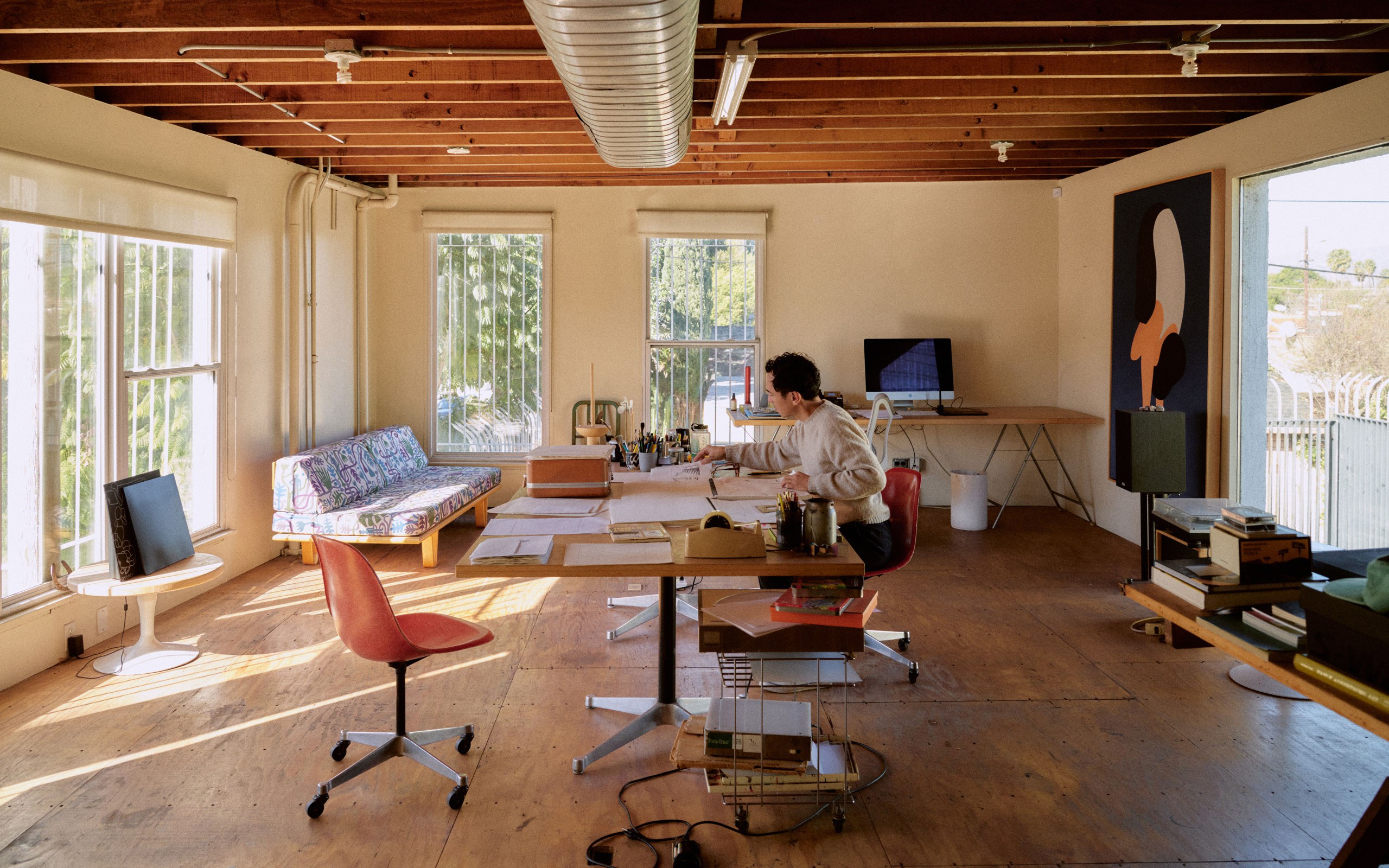
You say that you liked turning drawings into things. The late 1980ies were full of cool things – did you want to put your pictures on them, own them in a way?
Yes! Subculture was my world, and I wanted to produce things that fit. It started with my love of skateboarding. Imagining design for these boards allowed me to use what I was learning at Art School and immediately put it into action, and at the highest level. When I started college, I was making skateboards and snowboards right away.
That sounds like an early start for a career?
Yes, I already had clients, making up things for them. And I loved doing it, because I could participate in subculture in a way that felt really fun. Very quickly, the things I had designed popped up all over the place and I liked the attention (laughs). I think it was, for me, the perfect introduction to art. However, I am definitely more inventive than when I started out.
You mention that you learned a lot from doing commercial art. Do you feel there is a barrier between the fine art that you are producing now and commercial art?
I definitely do both. When I am just in my studio painting, it is a different experience from working on projects. And while you obviously can’t say that it’s the same thing, I somehow do try making it the same.
Although with a client, you probably have a brief?
Well, I found that briefs are flexible. At first, the clients might give you directions to point you the right way. But if you discuss your thoughts, if you are developing the brief together, it’s more creative. Today, working together is the only way I find interesting in ways of collaboration. My best ideas often come from inputs from other people, by getting challenged!
And when you work for yourself, would you say that you sort of give yourself a brief, too?
Yes. It is a process that I have developed. For instance, when I’m working on a show, to get myself started, I sit down with just a sheet of paper, where I type up words, poems, and sentences, just like a brief – although probably the weirdest brief you have ever seen! This is what I mean when I say that I have learned so much from my commercial work… the brief just might be part of it!
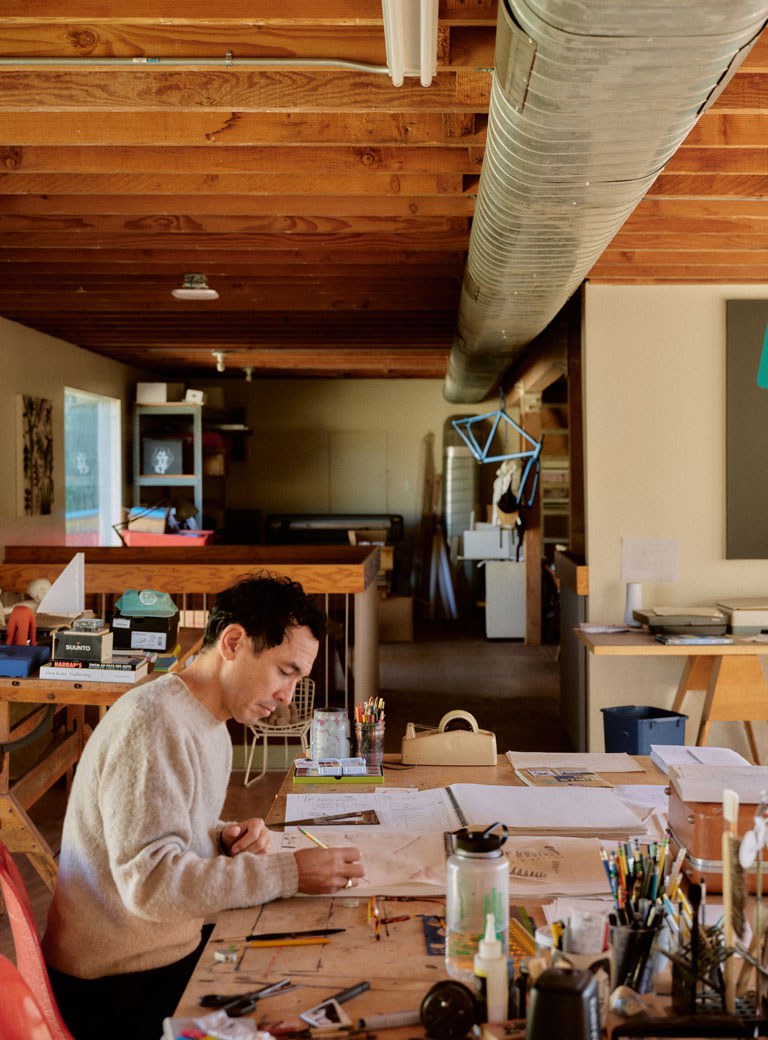
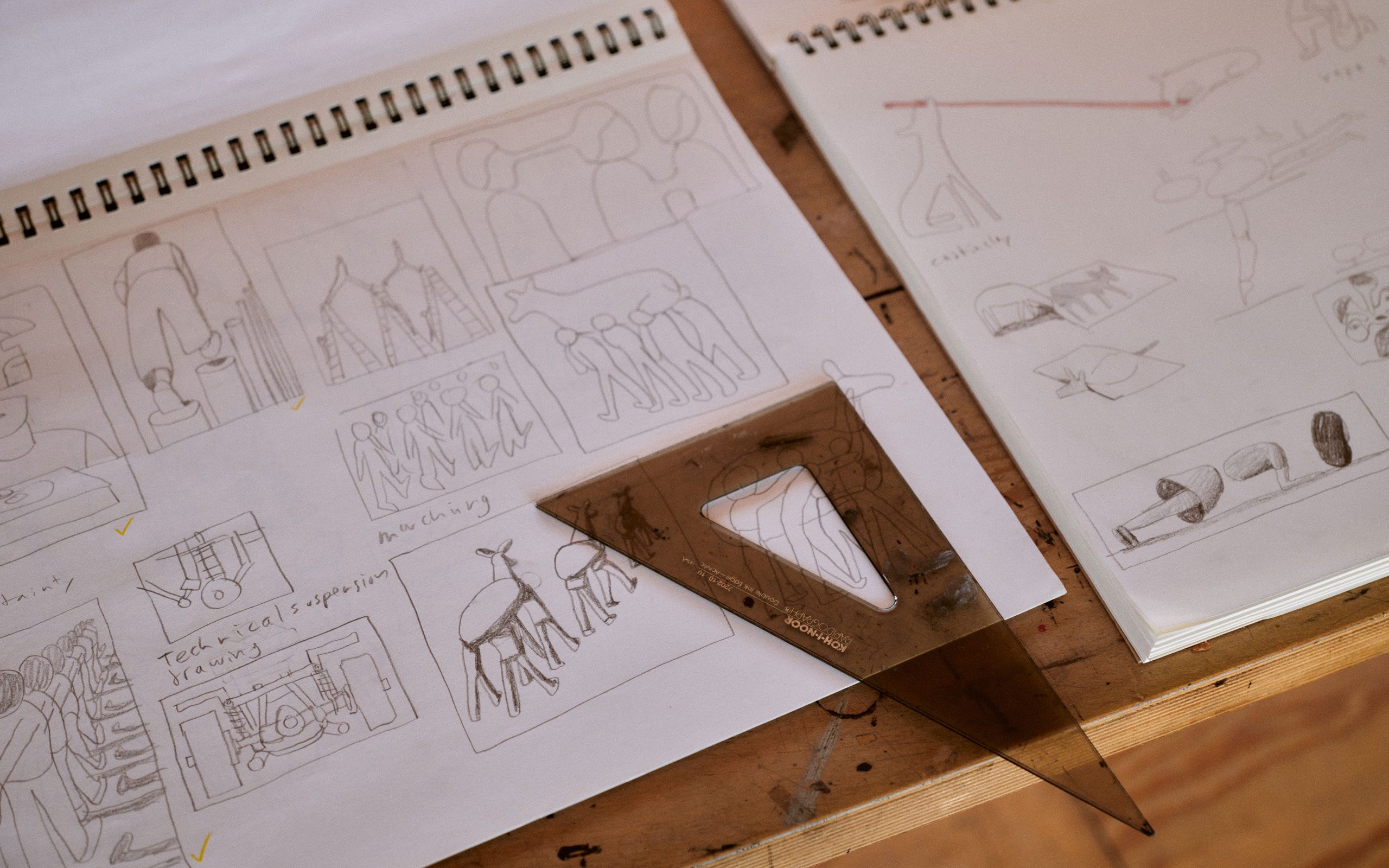
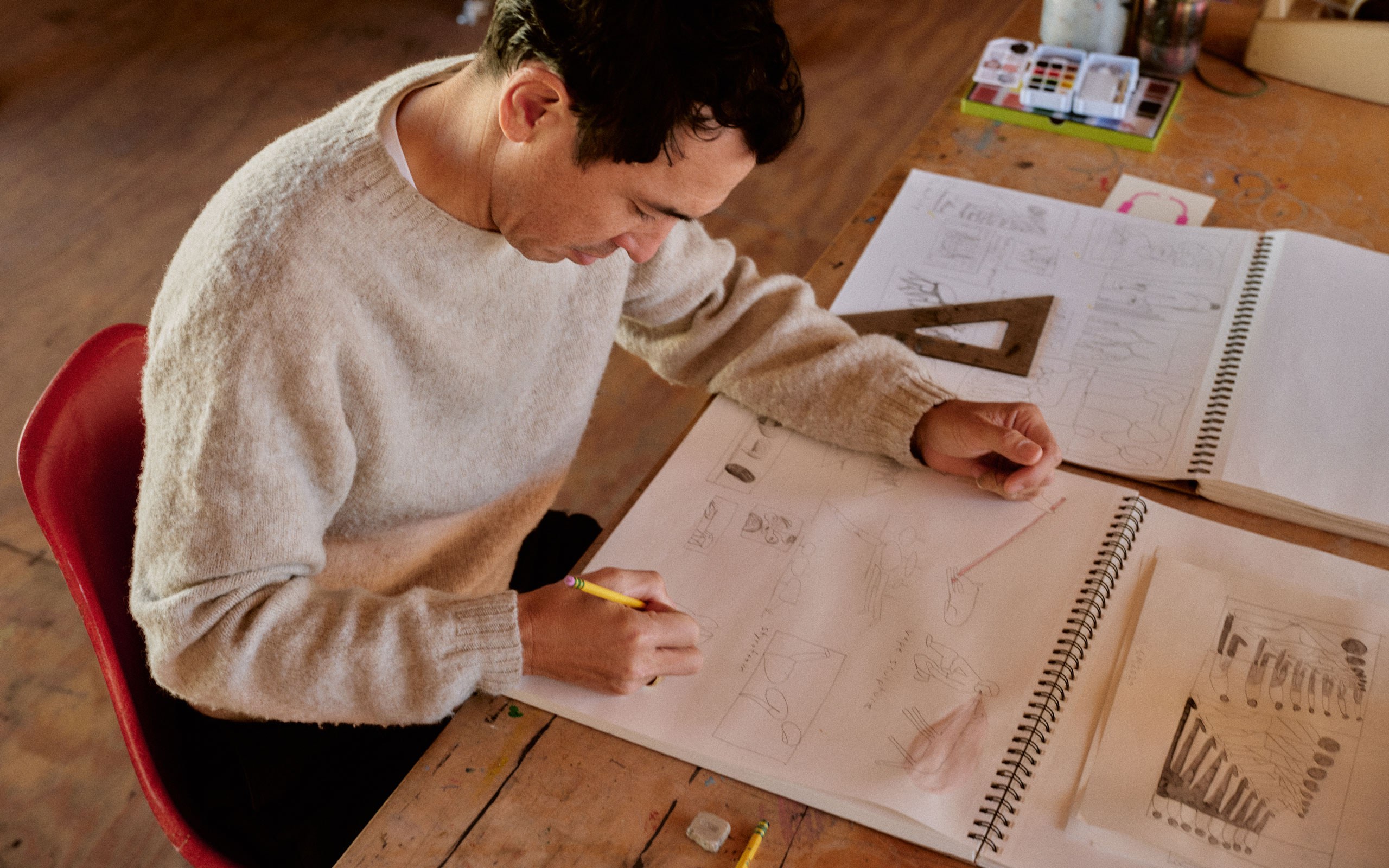
You have worked for Apple, for Nike…
I have worked for amazing people. For example, when you work for Apple, you don’t feel like you’re getting a brief. They just say: “Do your best! Here is a prompt, and here is our reaction to what you did, and it’s going to get even better…” It’s just that feeling of…
…being encouraged?
Yes! It’s their way of talking to artists… When you collaborate with someone, you feel like you are working towards their expectations. It’s so nice to know that – whether it’s a gallery or a client or a group of friends – there are people whose expectations of you are almost higher than your own! For me, that is definitely something that I am looking for.
It sounds like doing commercial work is a happy place. Is it ok to be a happy person in the “fine art” world too or do you feel you almost have to justify yourself, not corresponding to the cliché of the tortured artist?
Yes. I don’t want to follow dark roads, disassemble myself. It may sound optimistic, but I’m using art for self-discovery. I want to better myself by making art. And I think that the most successful of my works describe something that I did not really know about myself before; my strongest works come from that place of self-discovery.
So your work isn’t as uncomplicated as people might think?
It’s not necessarily as light as it may seem at first glance. If you look at it, my work is laced with humanity, which in turn means addressing the kind of very human qualities that are dark, too. For instance, in my last show, I showed a sculpture of a deer sitting in a meadow, cast in aluminum. But when you walk behind it, you see there is another deer hiding within it. The first deer had been hollowed out, like a cave, like a carcass and was nurturing the hiding deer.
Creating a sub context?
Yes, and I think that applies to every single thing that I make. The first layer is appealing and friendly, but if you look closer – if you step behind it, so to speak – it reveals something deeper.
Is your work about these layers? Or about something else entirely?
Well, I thought for a long time that I just made art about creativity. But is it viable to make art about making art? At first, I wanted to explain what my experience making art was all about: which simply is being human.
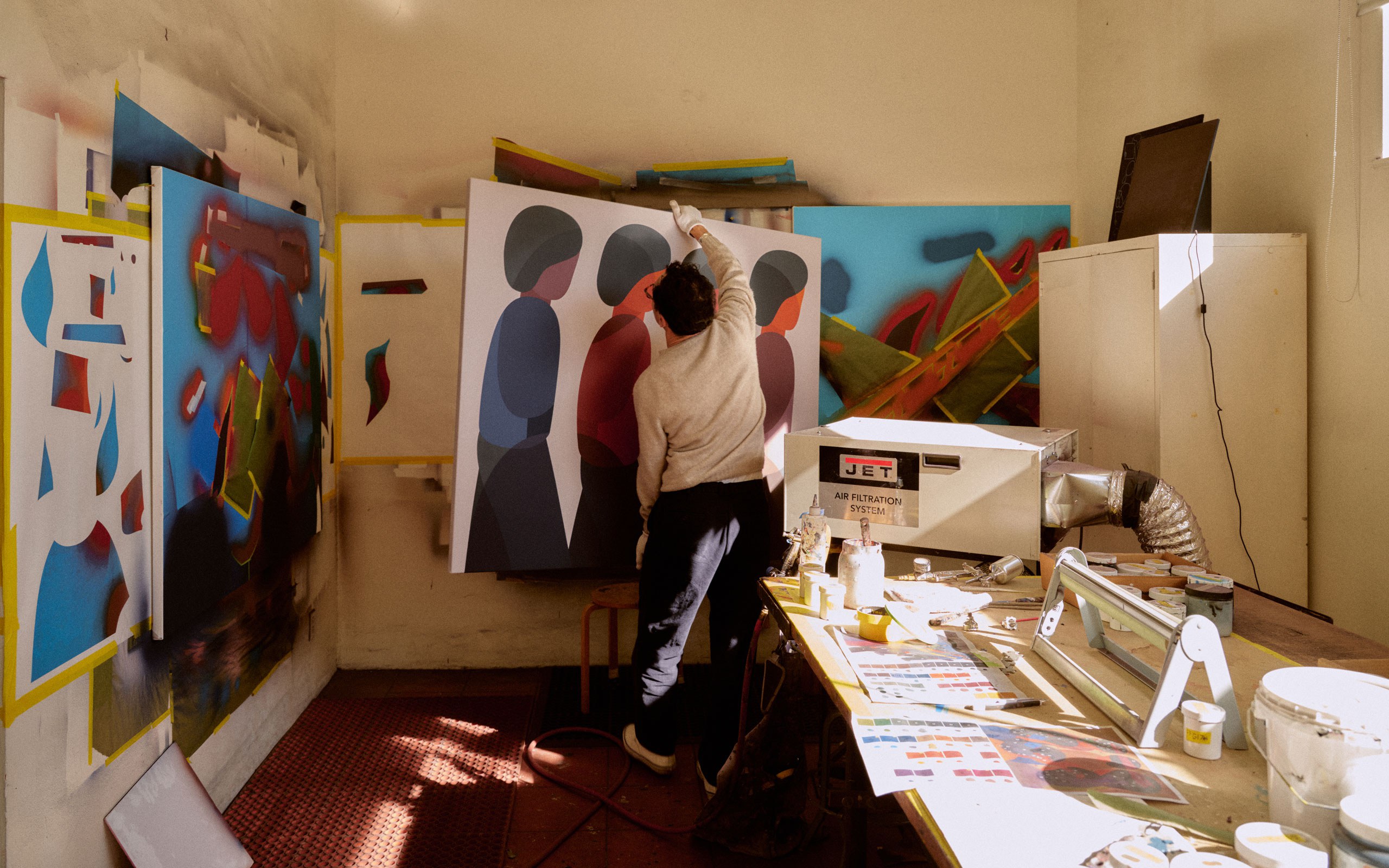
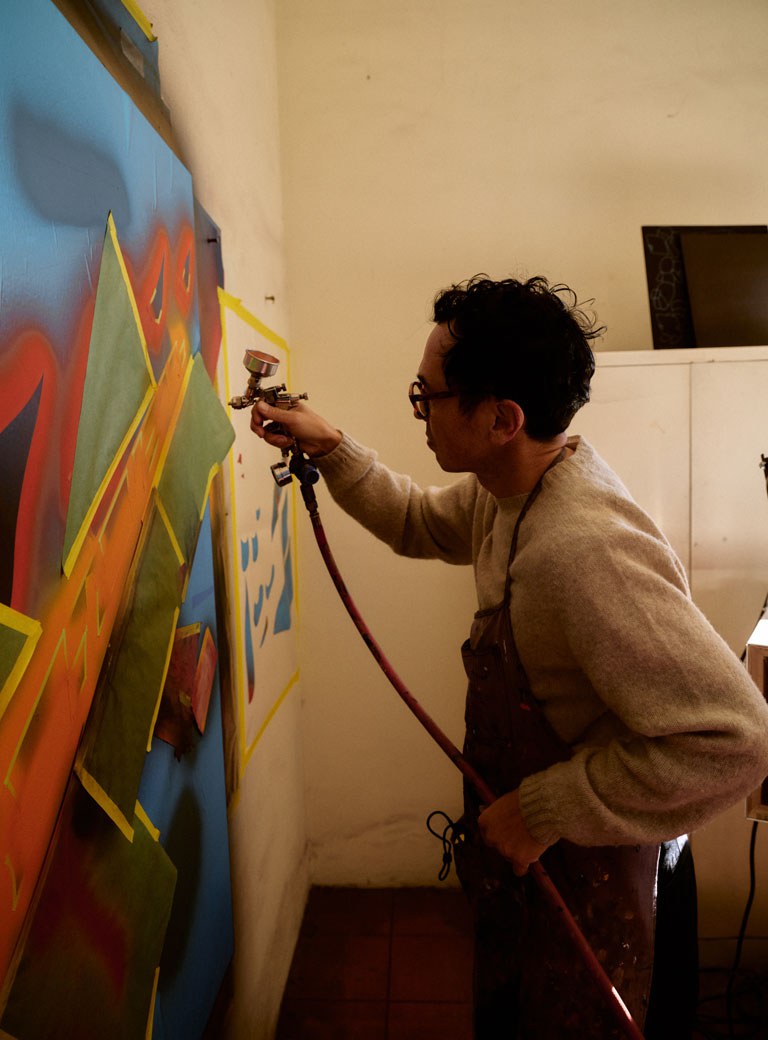
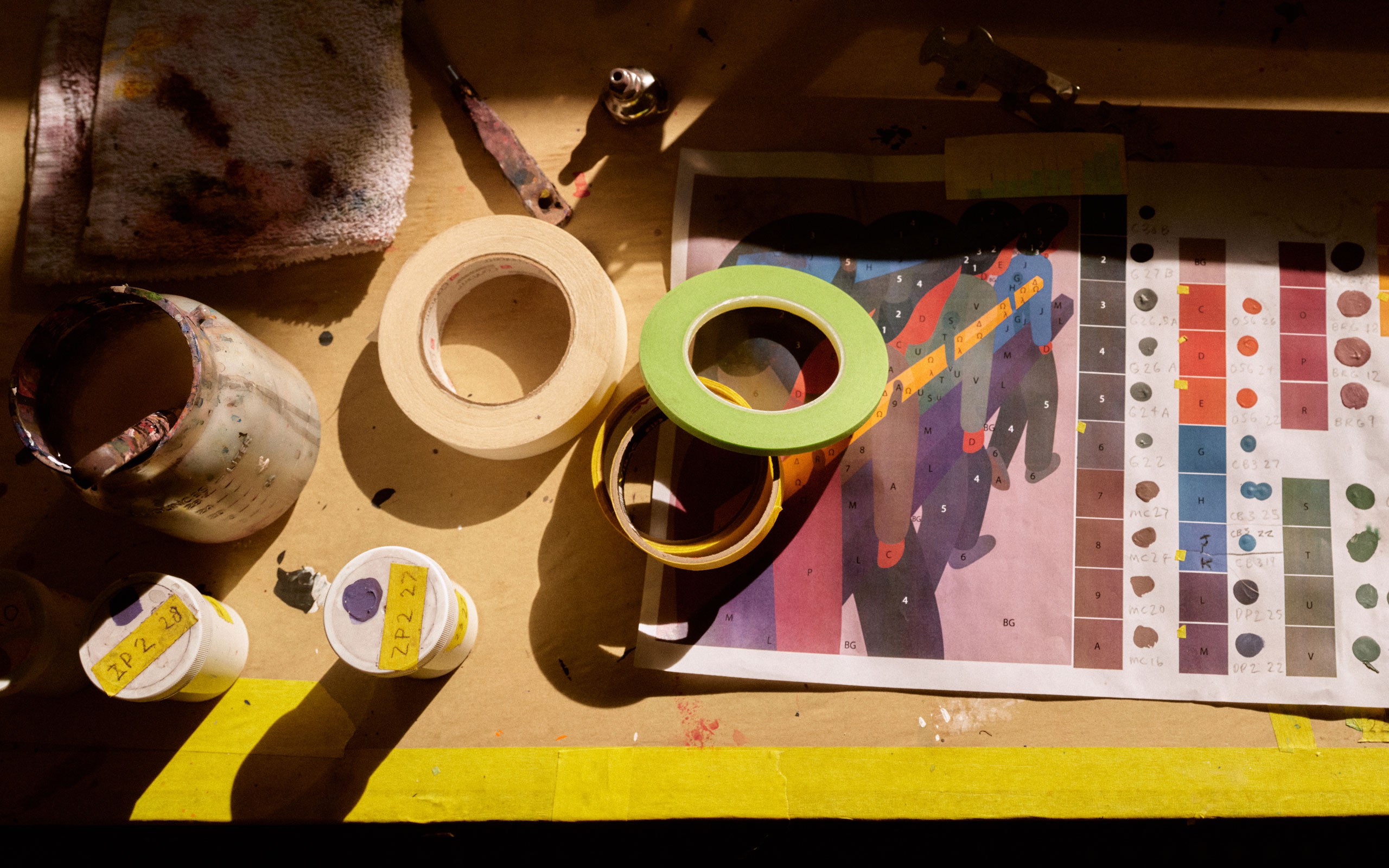
How has your perception changed now?
Today, I use art to talk about the very basic materials of being human: consciousness, having a body. There is an analogy between understanding ourselves as human and our relationship with other people, and it’s correlated with the experience of being a creative person. I want to describe this experience. It’s about having a visual language, being a decoder.
Talking about decoding: at first glance, your visual language is simple…
When we say simplicity, we just say that is it not abstract! I am always playing with this deeper understanding of forms and shapes that is primal. However, today our understanding is very much influenced by modern marketing. Just think about the kid who’s been fed graphics to sell him things since the day he was born.
As a result, we are very visually literate. Does this play into your fine art work?
I think yes. My art would have been different fifty years ago. What I do is take this visual literacy and repurpose it. My type of literacy gets referenced a lot, people use my type of work all the time in the commercial world, copy it.
And there are a lot of copycats around?
Yes, there are! People who know my work might say: “Look at that copy!” But what they are really saying is: look at that person that did something based on what they think your work looks like. There is such a wrongness to it, it’s almost rewarding (laughs). Those copies can never represent my intentions!
So it doesn’t worry you too much?
No, because copying is the cheapest thing. Whoever copies me might use the same five shapes, but he will not think like me. The thousands of hours I have drawn - well, good luck to actually drawing like me (laughs). I benefit from the simplicity of my work. Because very complex things are actually very easy to copy!
But not your work?
I don’t think so, they cannot copy what I want to achieve with my art: the poetic reimagining of a thought. I feel that selling graphics without wanting to sell people products at the same time is powerful.
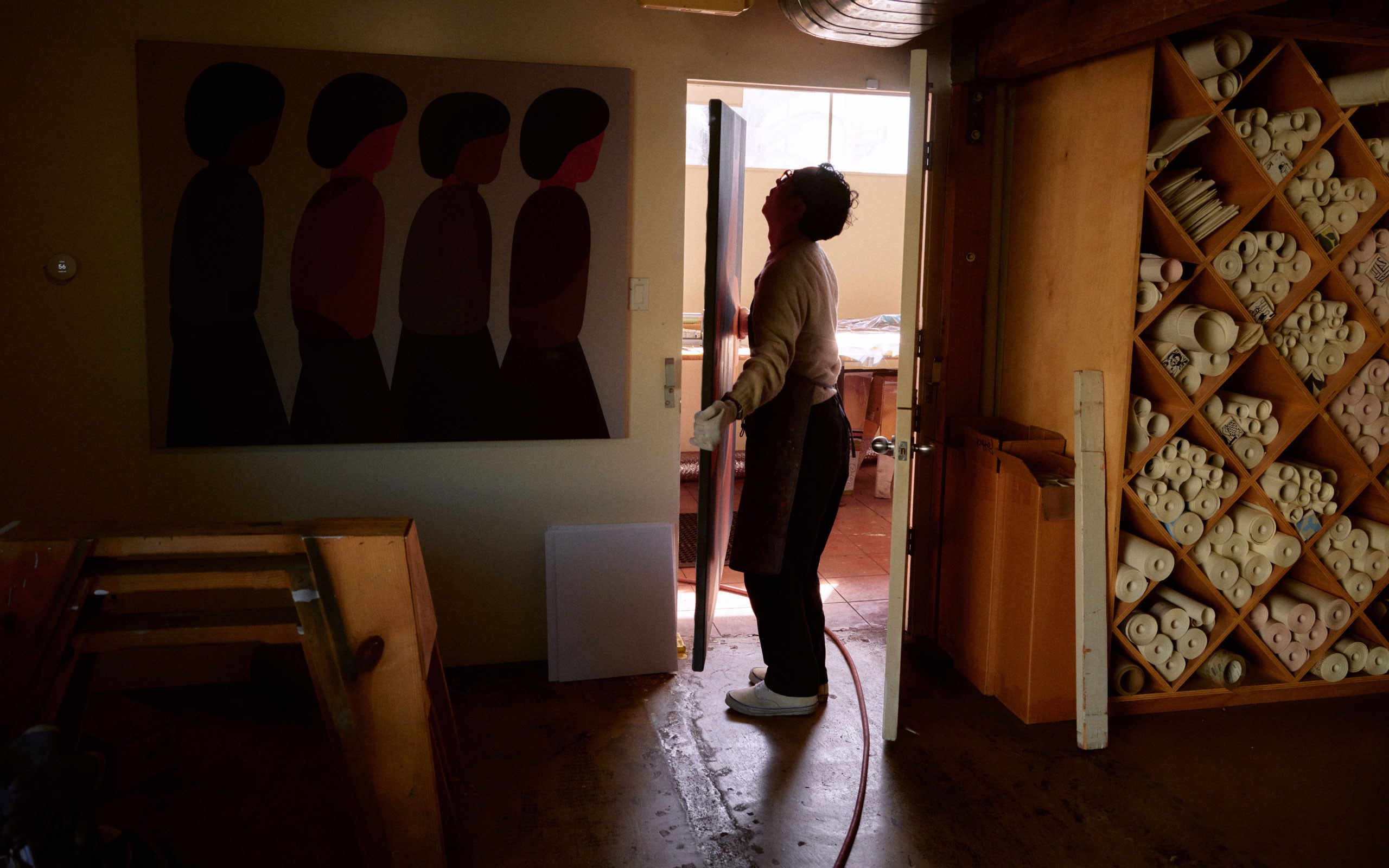
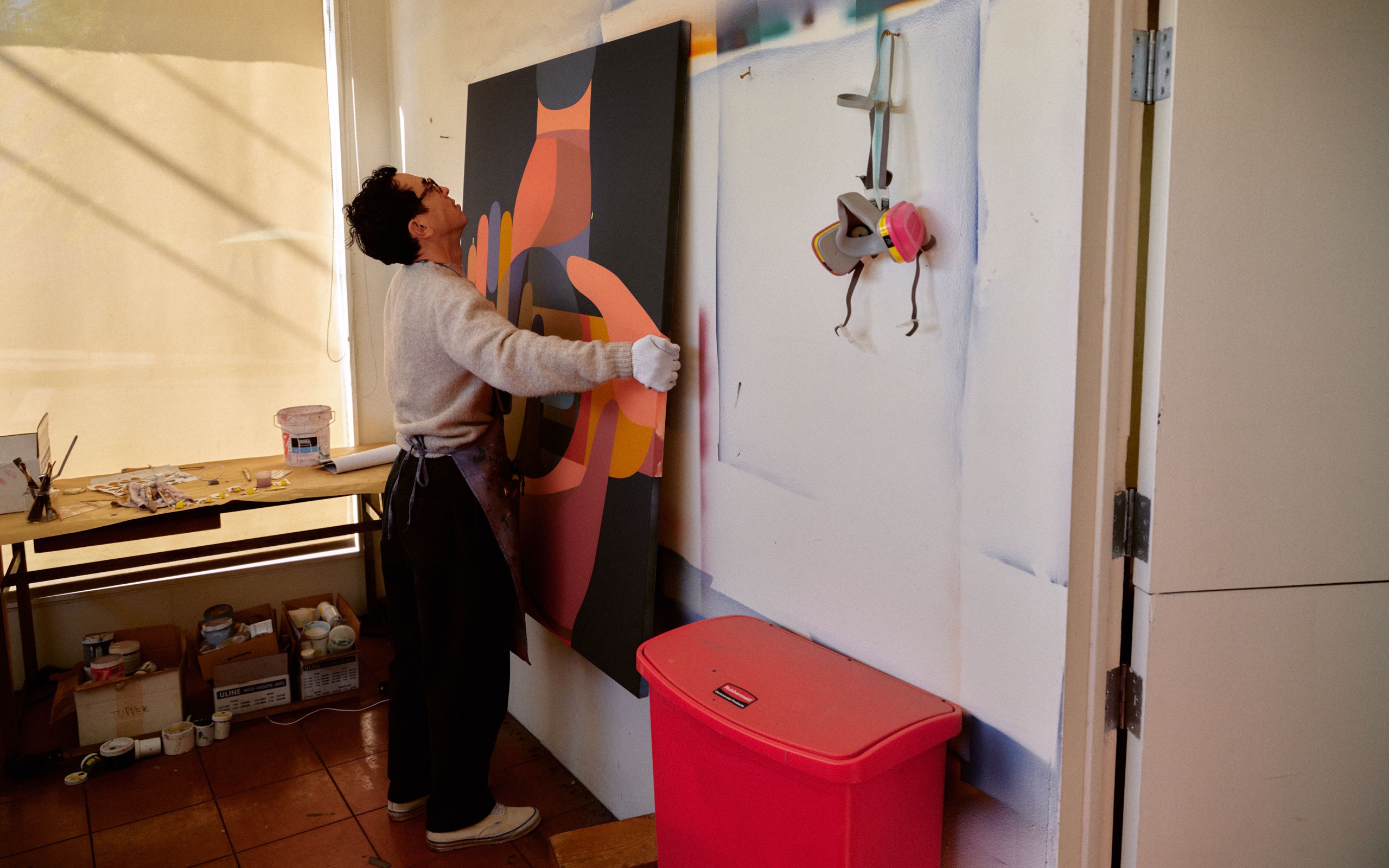
I’ll be the devil’s advocate: you’re still using those graphics to sell something, namely your art!
Right, and it’s true that I have struggled… Because if you’re good at being manipulative to sell things - what do you do with your art? But I believe that objects and images made by a person hold the intentions of that person. The work reflects that person. So I am very careful about what I put in my work: what I put in, I believe in. The goal is to reach that belief through imagery. So yeah, there might be manipulation involved. I might agree that selling my art is just like selling any other product, but I view that as being worth it. There is something generous about me believing in the work (laughs).
So your commercial work is unlike the one in your art shows?
I promise - if you look at my work in my shows, it’s really different. And when a piece did well, I won’t be doing it again and again. I create new images constantly, they are like steppingstones. Regarding my paintings, I don’t follow the typical success model. This would mean just making more of an image people like, having everybody buy it, creating a market, and becoming more bankable as an artist. It’s not like that for me at all.
However, your work is instantly recognizable – does this help you becoming known quickly as a fine artist too?
Yes, the recognizability is very truthful. But then, as I said, I don’t repeat the same designs. What is consistent in my work is my way of thinking, my intonation, my tone, my simple line. The other thing about having recognizable work is that it allows people to take the creative journey with you. Every aspect that I change is obvious. I’m creating imagery that represents thoughts, and each image is responding directly to an intention at that time.
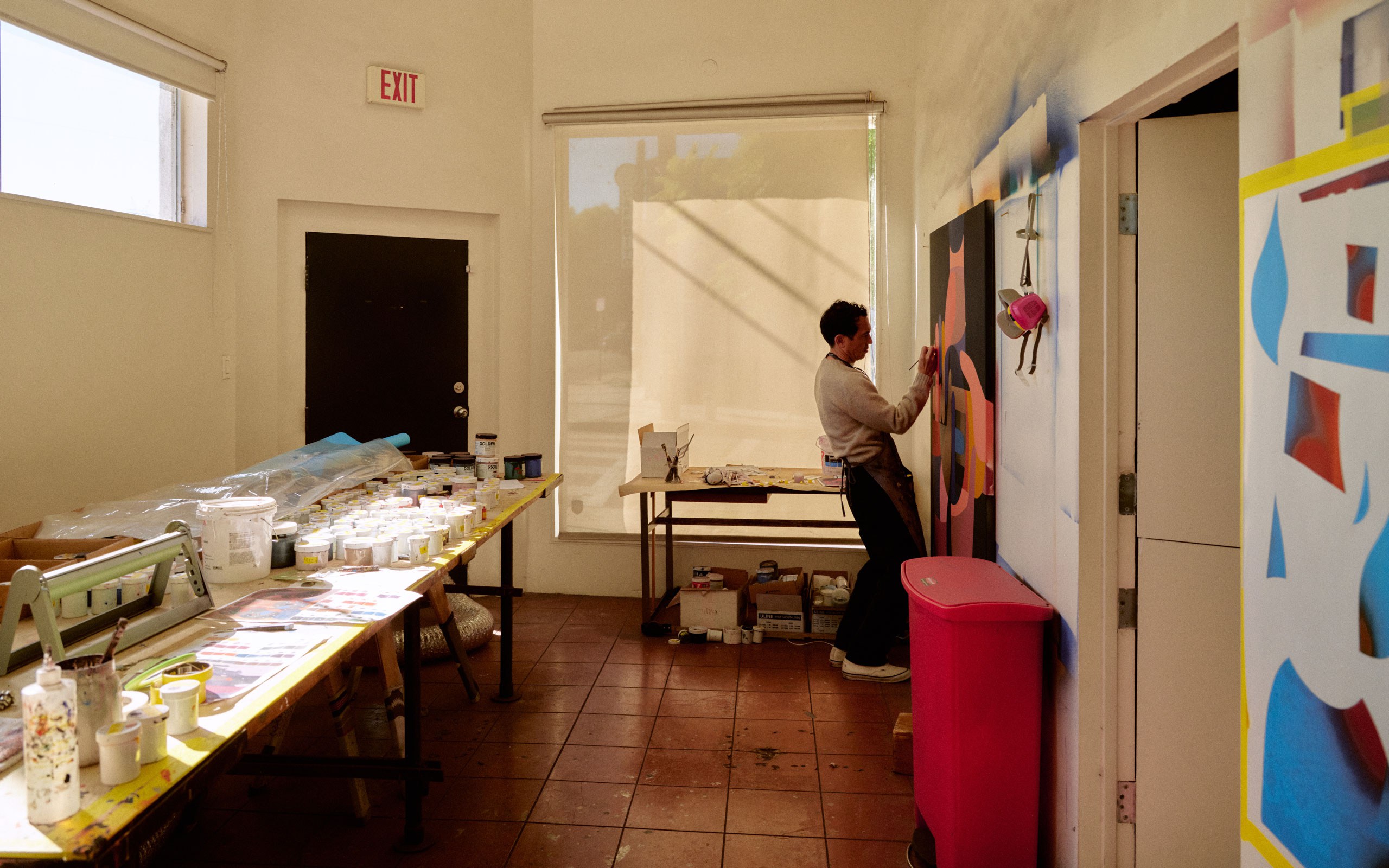
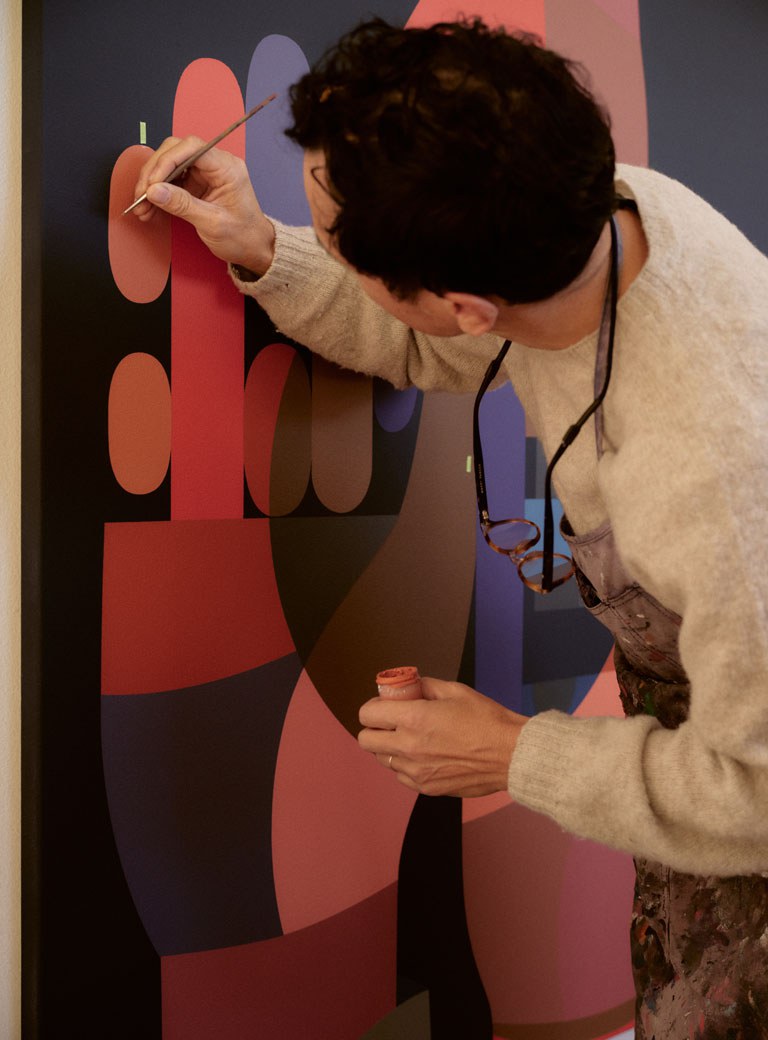
Is that true for the titles of your paintings as well? Some are quite complicated like: A Reasonable Disconnection With the Interconnectedness of All Things – what does it mean?
Ah, that one comes out of this experience of letting loose. I don’t do psychedelic drugs, but I know the first thing you experience under the substance is feeling the interconnectedness of all things. What I’m really looking for is a reasonable understanding of this interconnectedness. I don’t want a full trip! From the start I decided that, as best I can, I would use titles as an entire body of work. It’s an opportunity to make the image better, to add to the experience.
That again must differ from your commercial work projects that do not hold their own titles…
Yes. During a collaboration, I’m given of course given the opportunity to explain things. But then the products stand alone. It’s different in an art context: besides journalists like you asking me questions, most of the conversation is just with myself! In the shows people don’t ask questions, even the conversation with gallerists is extremely limited. It’s a closed system to some degree.
So how did you experience the crossover from commercial to fine art?
I’ve been having gallery shows since I started making fine art work. Some people might think though “Oh, you do commercial work, you’re not allowed to do art”. My way to deal with that is to deliberately not focus on fine art alone.
Meaning you don’t stop your commercial projects?
Right! The amount of energy I have put in commercial projects is huge and I like the idea that I am in those two different worlds. Yes, of course there are gatekeepers, thinking: “What is this guy doing”? But that’s up to me to define! It’s my career to define! I am super happy where I am, I like to be operating in different worlds. In my belief part of being an artist is doing things that have never been done before, and this is one of them!
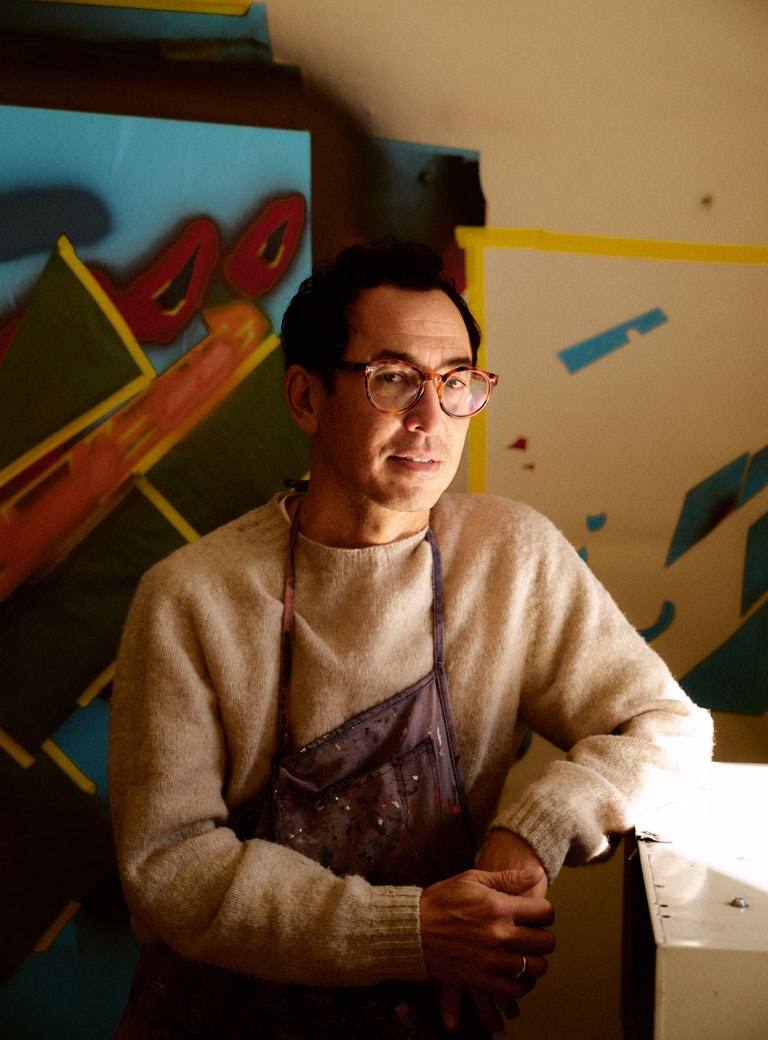
There have been artists like Warhol and Rauschenberg, who came from commercial art; they left designing or window dressing to be just artists…
Yes, but think of the world back then – you had to wear a tie to go to work in an office! That is how long ago this was, and now we still have this sort of divide? Time moves, the world moves, there is the dismantling of conceptions, of barriers… And still we have some of these old conventions, maybe due to art collectors.
They probably want to invest in “serious” artists… On that note, I read that you are the most well-known artist people have never heard of – does this moniker annoy you?
I have dedicated myself to being a participant, a contributor to subcultures. That is my interest. I am curious about a world in which people are doing real things. For instance, when I go to a mountaineering store and somebody there tells me: “I love your work for Patagonia”, that is a great connection! Now there are also people who just view me as a painter because they know my work from my Instagram account. I have this fan base that I feel is the opposite of mass – it’s micro, it’s this powerful concentrate.
You said that you liked to be challenged. That applies to your sportive endeavors as well, like marathon running… Do you think that helps with art, keeping you in for the long run, so to speak?
Primarily I keep sports “meaningless” which is not hard to do. But I do get a lot out of physical things. Long distance trail running, cycling, surfing, skiing. These are things that have helped me clear my head over the years, but in many ways, they have changed the trajectory of my life. So many of my friends are from these worlds. I work for clients from them. Being able to stay on my feet for many hours straight has come in handy when making art, but really it is the experiences in the outdoors that I have benefited from the most.
Talking about work - what are your new projects or shows?
The main thing coming up is a solo exhibition Half Gallery in New York starting in March 2024. I will also show work with Library Street Collective at Expo Chicago in April 2024. And there is a documentary, Drawing A Life, about my career that will kick off the Los Angeles Metro Arts 2024 program at Union Station in LA.
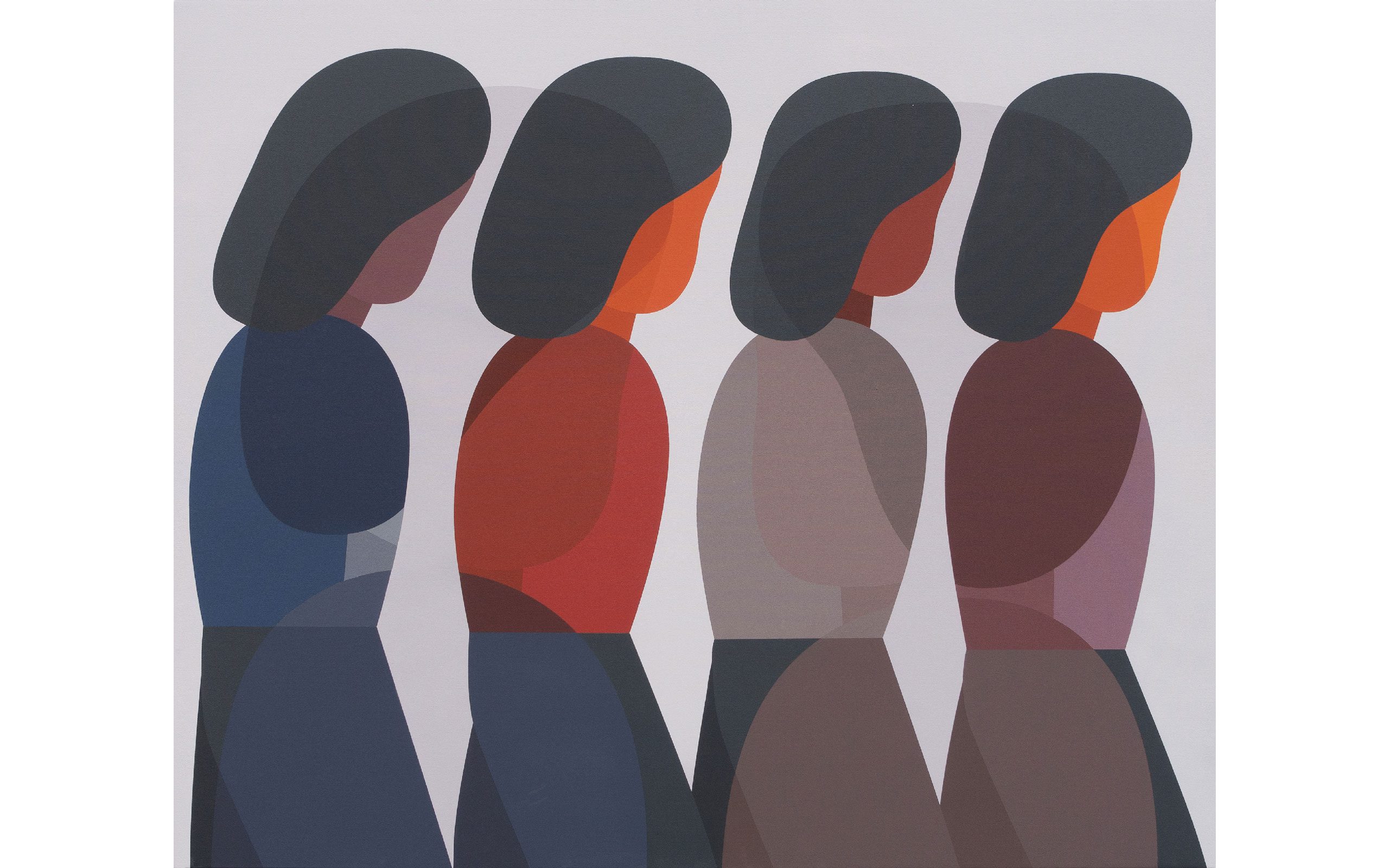
An Approach to Understanding, 2024, 60” x 50”, Acrylic on canvas
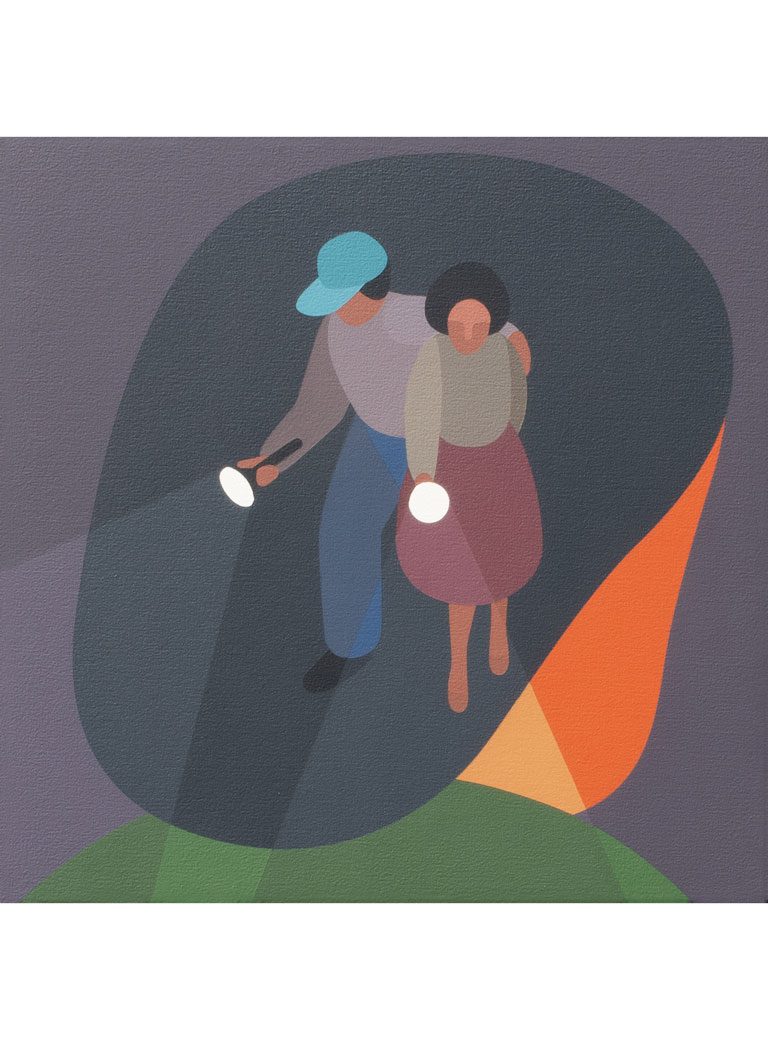
Looking For The Music, 2024, 18” x 18”, Acrylic on canvas
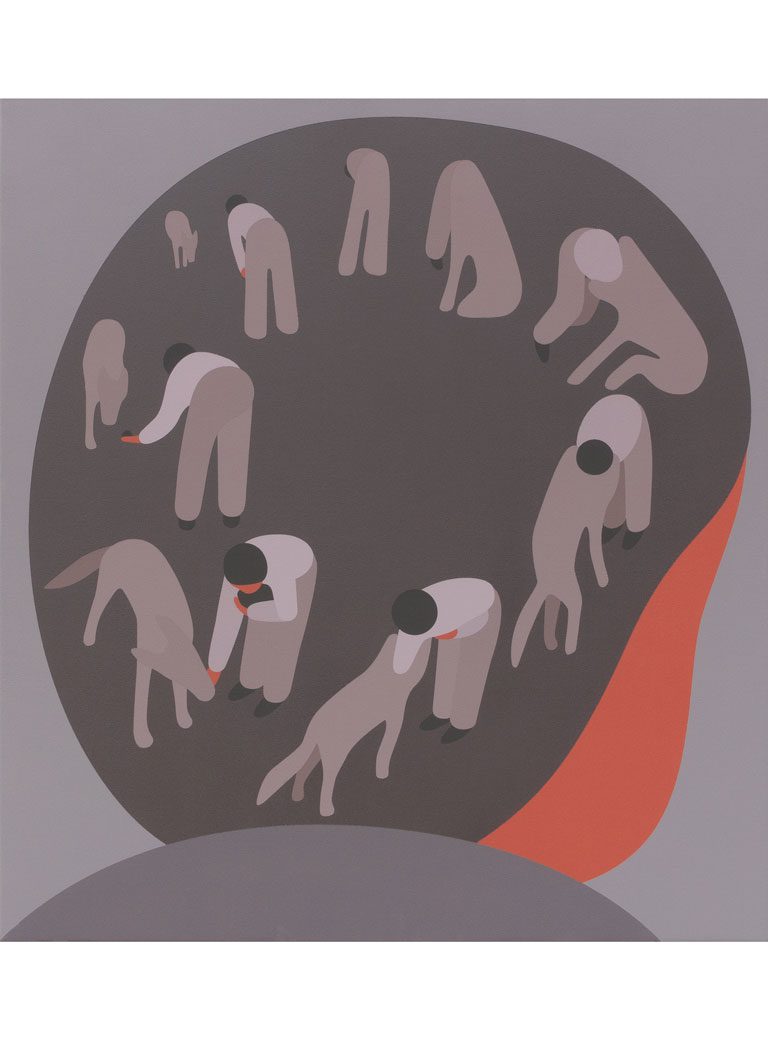
It Feels Like a Loop But it’s Not, 2024, 50” x 55”, Acrylic on canvas
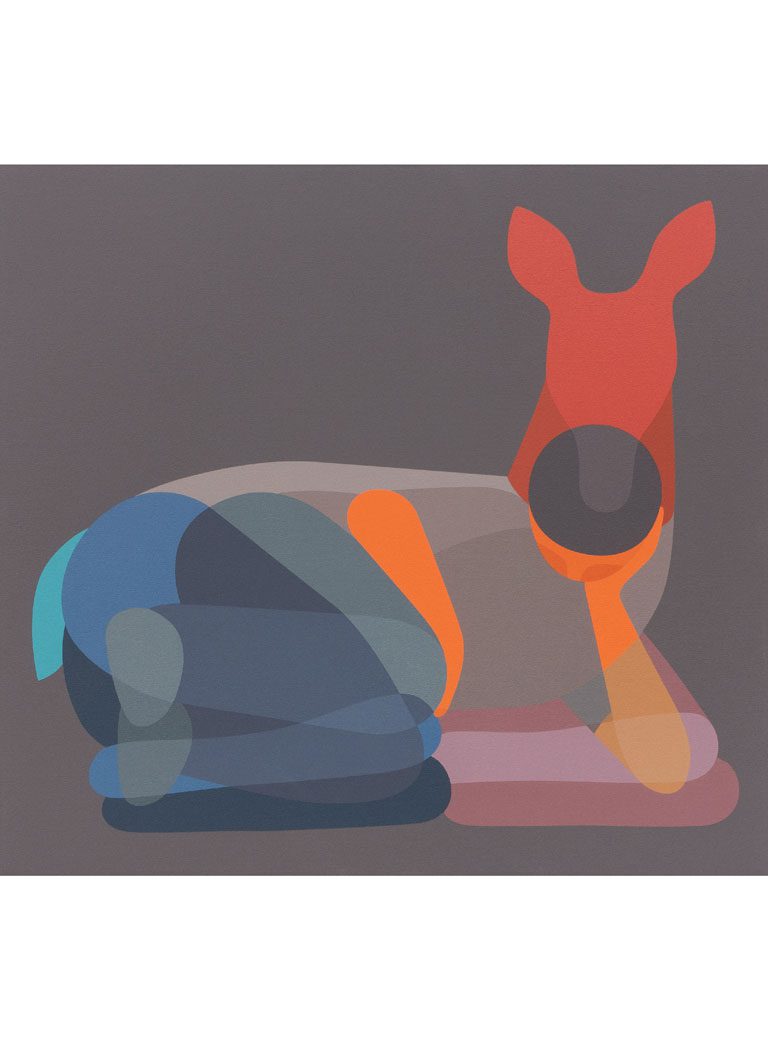
Non Human Audition, 2024, 43” x 40”, Acrylic on canvas
Interview: Alexandra Markl
Photos: Cody James


